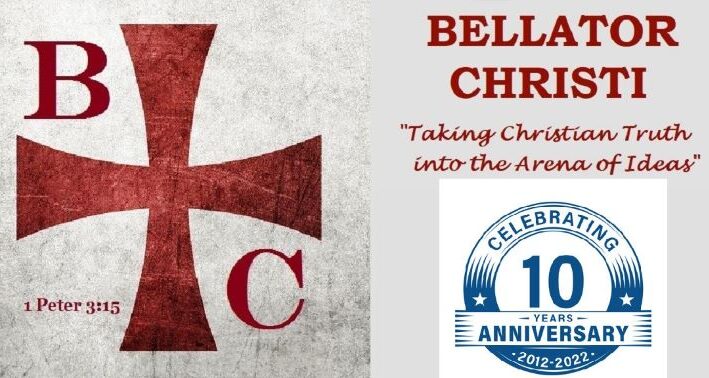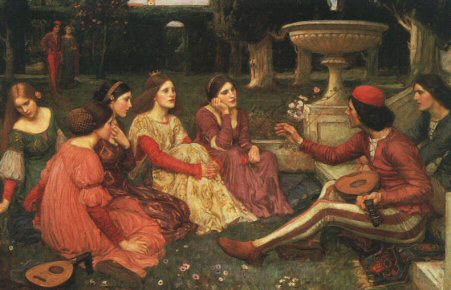Podcast: Play in new window | Download
Subscribe: Email | TuneIn | RSS | More
By: Brian G. Chilton, Ph.D., M.Div. | November 2, 2023
S7E9 Oral Traditions and the Dependability of God’s Word on YouTube
S7E9 Oral Traditions and the Dependability of God’s Word (Article)
What Do We Mean by “Oral Traditions?”
When we speak of “oral traditions,” we are speaking of stories that are important to a person and community that are passed along from one generation to another. Before stories were written down on paper, communities often transmitted stories to their children that existed from numerous generations of the past. Most assuredly, most of the stories that we find in the Bible originated with oral traditions. Even in the most literate of cultures, a person does not walk around with a pen and paper, documenting everything that is seen. Neither do most normal people walk around with a video recorder, taping everything they see.
When important events transpire, historians—serving as detectives—interview eyewitnesses to compile information to accurately recreate the event. Since the reports stem from eyewitness accounts and may not be recorded for some time after the event, then the story is initially told and spread by an oral tradition, or an oral account, of what happened.
Do Oral Traditions Work the Same as the Telephone Game?
Living in a written culture, I was suspicious when I first learned about oral traditions. Like many, I assumed that oral traditions must work comparably to the old schoolyard game “Telephone.” Telephone is played when a person tells Person A a story. Then, Person A tells Person B, Person B tells Person C, and so on until it reaches the last person in the line. By the time the information is told by the last person, the story has completely changed from what Person A said.
The funny game shows that information is not always accurately and precisely communicated from one person to another. However, oral traditions do not operate in the same manner because communities are involved with storytelling. People from the group can correct the storyteller if he or she tells the story incorrectly. Anyone married knows that our wives will quickly correct us if we say something that is not right. Imagine how much more self-correction occurs within an entire community.
Is There a Model That Best Describes How Oral Traditions Work?
Three models have been offered to describe how the transmission of oral traditions works.
Informal Uncontrolled Model (Bultmann and German School)
First, there is the view held by the German theological school which was defended by one Rudolf Bultmann. The German school defended a position known as the informal uncontrolled model. By “informal,” they indicate that no one was assigned the role of the guardians of the tradition. As such, no hierarchy existed, and no one necessarily preserved the story. By “uncontrolled,” the information was not necessarily memorized, resulting in each group adding to the tradition as they saw fit.
Bultmann notes the existence of NT prophets who likely held that when they spoke, they spoke for Jesus. To a great degree, Bultmann’s model does resemble the classic game of Telephone more than the others. Most troubling, Bultmann asserts that “I do not indeed think that we can know almost nothing concerning the life and personality of Jesus, since the early Christian sources show no interest in either, are moreover fragmentary and often legendary; and other sources about Jesus do not exist” (Bultmann, Jesus and the Word, 13).
When examining the NT texts and the similarity they hold with rabbinic practices, strong doubt is cast upon the Bultmannian viewpoint. This was true of the Scandinavian school led by Harald Riesenfeld and Birger Gerhardsson. They advocated a view known as the formal controlled model. The transmission of the Jesus traditions was formal in the sense that they were entrusted to the disciples and early leaders of the church.
Evidence of Mnemonic Devices
Additionally, they were controlled in that the information was memorized and passed along according to rabbinic traditions. If there is a sense that the information was controlled, then we should see evidence of mnemonic devices in the biblical narratives. In my dissertation studies, I was shocked to find numerous examples of mnemonic devices used throughout the Gospel of Matthew. Antithetical parallelisms—a teaching tool and mnemonic device—are found over 100 times in the teachings of Jesus in the Gospels alone. While formalized mnemonic devices throughout the parables were more difficult to come by, they were certainly found in the narratives and teachings of Jesus. This counters Bultmann’s objection, as well as those offered by Bart Ehrman against the Scandinavian school. To see more from the Scandinavian school, check out Memory and Manuscript by Birger Gerhardsson.
Formal Controlled Model (Gerhardsson and the Scandinavian School)
Another aspect that favors the Scandinavian school is the discipleship model in the Gospels. Jesus taught and formed his disciples in a manner that fits rabbinic tradition. The disciples were brought on to be the caretakers of Jesus’s message. Thus, the Scandinavian school better suits the model set by Jesus than does the German school’s interpretation.
Despite the model’s strengths, some scholars criticized the Scandinavian school because they had difficulties accounting for the differences between the Gospel texts. For instance, why does Matthew’s Sermon on the Mount read slightly differently than Luke’s Sermon on the Plain? In some cases, it may be said that the Gospel writers refer to different events. Yet in some other cases like the case with Jesus with Jairus and Jairus’s daughter, such explanations may not be sufficient to explain the differences. So, why does it seem like the teachings of Jesus differ in form from one Gospel to another?
Informal Controlled Model (Kenneth Bailey)
Kenneth Bailey constructed a model that others like C. H. Dodd and W. D. Davies previously suggested. He called it the informal controlled model. This form of oral tradition transmission was controlled in the sense that those passing along the information were concerned about memorizing, learning, and accurately transmitting information about Jesus’s life and teachings. However, it was informal in the sense that there wasn’t one specific person who was responsible for its accuracy. Rather, it was the community’s responsibility. As such, there may be different streams of traditions. This format allows gatherings to come together, called the haflat samar—meaning “to preserve,” and communicate the stories they held so dearly. They were allowed to slightly alter the story to communicate the information to different audiences, but they were not allowed to change any of the pertinent information.
From my studies in the Gospel of Matthew, the informal controlled model seemed to best fit the information within certain segments of Matthew’s Gospel. However, I think that Bailey’s informal controlled model is more closely akin to Gerhardsson’s formal controlled model than Bultmann’s informal uncontrolled model.
Semiformal Controlled Model: A Possible New Model?
We cannot dismiss the important role that the communities played in the preservation of Jesus traditions. However, we also cannot dismiss the hierarchical structure that existed in the early church. Jesus chose three inner circle disciples, then twelve of his closest disciples, and then commissioned some 72 disciples whom he sent out two by two. Thus, I think we must allow a bit more flexibility than the Scandinavian school permits. But I think we need to also accept a bit more formalization of the Jesus traditions than even necessarily Bailey allows. Perhaps we could allow something of a mix and call it the semiformal controlled model.
Are There Good Examples of Oral Traditions in the Gospels?
Absolutely! In my dissertation, I observed that the Sermon on the Mount was filled with Aramaisms and mnemonic devices, signifying that the Sermon on the Mount was passed down from generation to generation, likely originating with Jesus himself. Joachim Jeremias said in his book NT Theology that he believed that the Sermon on the Mount was likely a catechism for early Christians. Additionally, many of the narratives and stories about Jesus include similar traits. Thus, we have every reason to believe that the early church was concerned about accurately memorizing and transmitting the teachings and stories about Jesus.
Why Does This Matter?
Before the Gospels and NT documents were written, the stories and messages of Jesus lived in the confines of oral traditions. The same is true for many of the stories in the Pentateuch. If there is evidence that the writers of Scripture included mnemonic devices and Aramaisms in their writings, then we have strong evidence to suggest that the information lived prior to their documentation. While I believe the Synoptic Gospels were written before AD 64 and the Gospel of John was written in AD 85, even if they were all much later, they could still remain accurate if the communities of believers accurately preserved them. We have reasons for believing that they did. Additionally, this also shows us that the Jesus traditions likely date to at least as early as the NT creeds, if not earlier.
My good friend, Curtis Evelo—you know him as the “Cowboy Apologist”—likened oral traditions to a song. And he’s right. When you hear the opening of Journey’s “Don’t Stop Believing,” you automatically want to sing, “Just a small-town girl, living in a lonely world. She took the midnight train going anywhere.” Likewise, once you learn a story and commit it to memory, then you can accurately communicate that information to others. The accuracy of oral tradition transmission is just another reason why we should believe in the inspiration, infallibility, and inerrancy of the Bible—God’s Holy Word.
About the Author

Brian G. Chilton is the founder of Bellator Christi Ministries and the co-host of the Bellator Christi Podcast. Dr. Chilton earned a Ph.D. in the Theology and Apologetics at Liberty University (with high distinction), a M.Div. in Theology from Liberty University (with high distinction); his B.S. in Religious Studies and Philosophy from Gardner-Webb University (with honors); earned a Certificate in Christian Apologetics from Biola University, and completed Unit 1 of Clinical Pastoral Education at Wake Forest University’s School of Medicine. Dr. Chilton is a member of the Evangelical Theological Society and the Evangelical Philosophical Society. In his spare time, he enjoys reading, working out in his home gym, and watching football. He has served in pastoral ministry for over 20 years and serves as a clinical chaplain.
https://www.amazon.com/Laymans-Manual-Christian-Apologetics-Essentials/dp/1532697104
https://www.amazon.com/Conversations-about-Heaven-Difficult-Questions/dp/1666762687
To listen to the last episode of the Bellator Christi Podcast, click the following link: https://bellatorchristi.com/2023/10/26/s7e8-inerrancy-does-it-matter/
(c) 2023. Bellator Christi.





